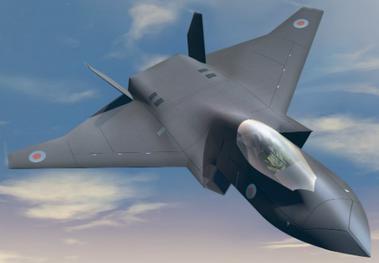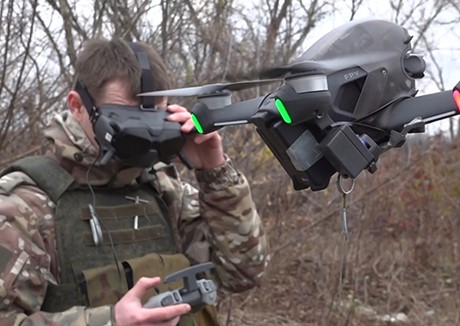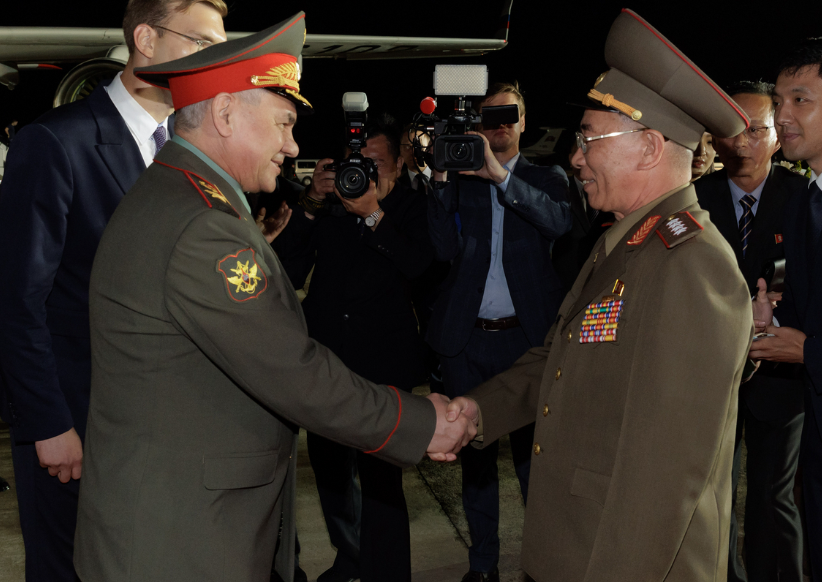Rendition of BAE Systems Tempest 6th generation fighter.
“Currently, we are thinking about the concept of a sixth-generation aircraft, conducting search research, exchanging views with military specialists. Such an aircraft should appear sometime by 2050, but already now it is necessary to understand what the armed conflicts of the future will be like.” – Evgeny Fedosov, Scientific Director of the State Research Institute of Aviation Systems.”
Russia hopes to have a sixth-generation combat aircraft prototype by 2050, according to the excerpted analysis of a report written by Evgeny Fedosov of the Russian Academy of Sciences published by state news agency TASS. Sixth-generation aircraft, still in their early phase of development, are expected to have advanced digital features like artificial intelligence (AI) integration and data fusion, as well as other enhanced command, control, and communication (C3) capabilities. The aircraft would be similar to fifth-generation combat aircraft—designed for greater air-to-air capability, battlefield survivability in anti-access/area denial environments, and ground support—but with greater focus on enhanced integration of AI systems and less focus on close-in dogfighting, which is a less common feature of current and future war scenarios. This is not the first time that the Russians have announced plans to develop a sixth-generation combat aircraft. TASS first reported these developments in 2017[i] and the article touts Russia’s Su-57 [RG1] Felon as “almost” possessing capabilities or easy upgradable features to become a sixth-generation aircraft. These capabilities include supercruise (i.e. sustained supersonic flight without use of an afterburner) and advanced avionics (i.e. an aircraft’s communications, navigation, and flight control systems).
The second excerpted article from the The EurAsian Times is a commentary on Fedosov’s report. It notes that AI technology will provide the aircraft with advanced digital and C3 capabilities, as well as data fusion and remote or autonomous piloting. Fedosov expects the pilot to be integrated into the airframe, with cockpits and helmet-mounted displays allowing for 360-degree vision similar to the F-35 [RG2] . Stealth, as before, will continue to play a huge role in sixth-generation aircraft capabilities. Several other nations have announced plans to develop sixth-generation combat aircraft to include Turkey[ii] as well as the UK, Italy, and Japan, which announced a joint plan to develop a similarly advanced fighter.[iii] The Russian military’s development of advanced combat aircraft has been notorious for delays, cost overruns, and faulty features evident in the deployment of its fifth-generation Su-57 aircraft. Discussing the aircraft, Fedosov acknowledged the complication of designing future combat aircraft as they become larger, heavier, and costlier to make. The TASS article suggests that the U.S. Air Force’s Next Generation Air Dominance plan to roll out a sixth-generation combat aircraft to replace its F-22 Raptor fighters by 2030 is unlikely to be eclipsed by the Russians anytime soon.[iv] The report further highlights divisions among the engineers, strategists, and aviators of Russia’s ministry of defense, over which capabilities to emphasize. The main divide is whether to focus on producing fighters designed for beyond visual range engagement or models (not unlike its previous Sukhoi or Mikoyan versions) capable of close-range dogfights, but there is also major disagreement over whether future models should be manned or unmanned.[v]
Sources:
“Боевой самолет шестого поколения может появиться в России к 2050 году (A Sixth-Generation Combat Aircraft may Appear in Russia by 2050),” TASS (Russian state news agency), 25 February 2024. https://tass.ru/armiya-i-opk/20081017
A sixth-generation combat aircraft may appear in Russia by 2050, now there is an exchange of views with the military regarding its concept. This is written in a column for TASS by the scientific director of the State Research Institute of Aviation Systems (GosNIIAS), Academician of the Russian Academy of Sciences Evgeny Fedosov.
“Currently, we are thinking about the concept of a sixth-generation aircraft, conducting search research, exchanging views with military specialists. Such an aircraft should appear sometime by 2050, but already now it is necessary to understand what the armed conflicts of the future will be like,” he writes.
Touching upon the design of future aircraft, Fedosov suggested that “to go further according to the logic of complication is a vicious practice.” He also pointed out that combat aircraft are becoming more complex from generation to generation and, as a result, becoming heavier. “And the larger and heavier the plane, the more expensive it is,” the academician concluded.
GosNIIAS is a leading center in the development of on-board aviation systems and equipment. The founder of modeling methods for designing automatic systems of any degree of complexity. The Institute participates in the creation of aircraft at all stages: from the development of the concept of aircraft creation to modernization during operation.
Ashish Dangwal, “Russia’s 6th-Gen Fighter Jet to be Deployed by 2050; Will not Dump Pilots for Robots – GosNIIAS,” The EurAsian Times (a privately owned digital news site specializing in defense and global news) 26 February 2024. https://www.eurasiantimes.com/russias-6th-gen-fighter-jet-to-be-deployed-by-2050/
According to state media TASS, Russia is actively setting its sights on developing a sixth-generation fighter jet that could be deployed by 2050.
The development was disclosed by Evgeny Fedosov, Scientific Director of the State Research Institute of Aviation Systems (GosNIIAS) and a distinguished member of the Russian Academy of Sciences.
Fedosov outlined the initiative in a column published by TASS, shedding light on the ongoing discussions and research surrounding the conceptualization of the sixth-generation aircraft.
According to Fedosov, the development process involves extensive consultation and collaboration with military specialists to anticipate the demands of future armed conflicts.
“Currently, we are thinking about the concept of a sixth-generation aircraft, conducting research and exchanging views with military specialists,” he said. Fedosov, however, highlighted a critical concern regarding the design complexity of next-generation combat aircraft, describing it as a potentially “vicious practice.”
He pointed out that with each successive iteration of military aviation, the size and weight tend to increase, inevitably impacting the cost of such equipment.
He also added that the sixth-generation combat aviation group will include both manned aircraft and unmanned vehicles.
“There is an opinion that the air group should be mixed and consist of drones and manned aircraft. Such a mixed park, in principle, can exist,” Fedosov remarked. He said that the size and speed of the drones would enable them to function as wingmen within a group.
Building upon the success of fifth-generation platforms, sixth-generation fighters would be designed to adapt to evolving trends in aerial warfare, where traditional dogfighting scenarios are giving way to long-range engagements utilizing beyond-visual-range air-to-air missile capabilities.
In recent years, numerous countries have declared their intention to embark on the development of indigenous sixth-generation aircraft programs, illustrating a global push toward advancing military aviation capabilities.
The United States Air Force is a key player in this arena, actively advancing its efforts to develop a next-generation fighter jet through the Next Generation Air Dominance (NGAD) stealth fighter program.
Multinational initiatives have also emerged, reflecting a strategic approach to leveraging shared resources and expertise while mitigating development costs.
…
China is also believed to be in the process of developing its sixth-generation fighter jet, having previously demonstrated its capabilities with the construction of the fifth-generation J-20 fighter jet.On the other hand, Russia has encountered difficulties in deploying its stealth fighter jet, the Su-57, in large numbers. Moreover, discussions concerning the development of a sixth-generation fighter jet have previously faced obstacles.
Notes:
[i] “Russia may upgrade advanced Su-57 aircraft to 6th-generation fighter jet,” TASS, 1 November 2017. https://tass.com/defense/973625
[ii] Dilara Aslan Ozer, Türkiye starts works on AI-backed 6th-generation fighter jet,” Daily Sabah, 12 January 2024. https://www.dailysabah.com/business/defense/turkiye-starts-works-on-ai-backed-6th-generation-fighter-jet
[iii] Josh Luckenbaugh, “UK-Italy-Japan Cite Steady Progress Developing Next-Gen Jet Fighter,” National Defense, 30 October 2023. https://www.nationaldefensemagazine.org/articles/2023/10/30/uk-italy-japan-cite-steady-progress-developing-next-gen-jet-fighter
[iv] Ryan Finnerty, “US defense spending bill could expose new details of sixth generation fighter development,” FlightGlobal, 19 December 2023. https://www.flightglobal.com/fixed-wing/us-defence-spending-bill-could-expose-new-details-of-sixth-generation-fighter-development/156256.article
[v] Boyko Nikolov, “Su-57 Felon is a step towards the 6th-gen, but Russians are at odds,” BulgarianMilitary.com, 24 November 2023. https://bulgarianmilitary.com/2023/11/24/su-57-felon-is-a-step-towards-the-6th-gen-but-russians-are-at-odds/
Image information:
Image: Rendition of BAE Systems Tempest 6th generation fighter
Source: https://en.wikipedia.org/wiki/BAE_Systems_Tempest#/media/File:Team_tempest.jpg
Attribution: Fair Use



